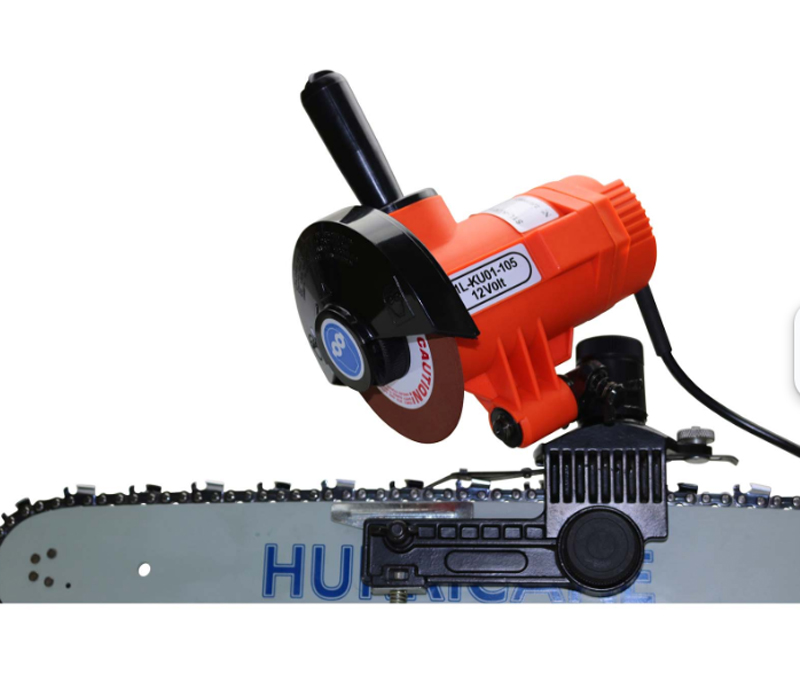Did you know that the chainsaw, initially designed as a medical tool in 1780, has evolved over centuries into the versatile tree-chopping machine we rely on today? No one can deny their usefulness in various industries, yet maintaining their sharpness remains a challenge. Chainsaw blades go dull quickly due to frequent use, which is why owning a reliable chainsaw sharpener is essential. Mastering the art of sharpening your chainsaw ensures longevity and optimal performance. But which type of sharpener should you invest in—manual, electric, or something else? Let’s explore the different types of chainsaw sharpeners available on the market today. Manual chainsaw sharpeners have been around for ages and don’t require electricity or batteries. This portability makes them ideal for those working in remote areas where access to power sources is limited. However, they demand physical effort and can be time-consuming. Most manual sharpeners come in the form of files that you manually drag across the chain’s teeth. There are also bar-mounted models that attach directly to the chainsaw blade for easier handling. The biggest advantage of manual sharpeners is their independence from electricity—they work anywhere, anytime. On the flip side, users must exert considerable effort to achieve sharp results. Bar-mounted sharpeners offer slight relief but still aren’t effortless. Begin by securing the chainsaw blade in place using clamps or a vise. Attach the sharpener to the chain and proceed to sharpen each tooth individually using a carbide file. While tedious, this method yields impressive results when done correctly. Electric chainsaw sharpeners are the modern solution for those seeking convenience and efficiency. Unlike manual models, electric sharpeners rely on motors to do most of the work, reducing strain on the user. There are several varieties of electric sharpeners, including bench-mounted, vice-mounted, handheld, and wall-mounted options. Each type offers unique advantages depending on your workspace and preferences. The primary benefit of electric sharpeners lies in their ease of use. With minimal effort, you can achieve professional-grade sharpness. However, their reliance on electricity means they’re less practical for outdoor work unless you carry a generator. Attach the sharpener to your chainsaw blade and follow the instructions provided in the manual. Most electric sharpeners feature adjustable settings to accommodate different chain types. Simply turn it on and let the motor do the heavy lifting. Bar-mount chainsaw sharpeners are compact, portable tools that attach directly to the chainsaw bar. By stabilizing the chain during sharpening, they simplify the process significantly compared to traditional manual methods. These sharpeners come in both manual and electric variations. Smaller versions are perfect for fieldwork, while larger models excel in stationary workshops. One major advantage of bar-mount sharpeners is their adaptability—they can be used in virtually any orientation. This flexibility makes reaching every tooth straightforward. Unfortunately, they still require some degree of physical strength to operate effectively. First, secure the bar-mount sharpener onto the chainsaw bar. Next, use the included file to carefully sharpen each tooth. While effective, this process can be labor-intensive depending on the sharpener’s design. For those constantly on the move, portable chainsaw sharpeners are indispensable. Lightweight and compact, they allow you to maintain your chainsaw’s edge wherever you go. However, their smaller size often translates to reduced efficiency compared to bulkier alternatives. Portable sharpeners typically fall into three categories: manual, electric, and automatic. While some models boast advanced features, most prioritize simplicity and portability over complexity. The primary advantage of portable sharpeners is their versatility—they travel easily and fit snugly into tight spaces. Their main drawback is their limited power, making them less suitable for heavy-duty tasks. Using a portable sharpener depends largely on its type. For manual models, follow standard filing techniques. If electric, refer to the user manual for specific instructions tailored to the model. File guides are lightweight, manual tools primarily used for rough sharpening. They lack the precision and speed of more advanced sharpeners but remain popular among outdoorsmen who value portability. Most file guides share similar designs, differing mainly in size and material quality. Electric variants exist but are relatively uncommon. The standout advantage of file guides is their simplicity—they require little training to use. However, they tend to be slow and labor-intensive, making them better suited for occasional maintenance rather than frequent sharpening. Position the file guide against the chainsaw blade and align it with each tooth. Move the file back and forth across the tooth until it reaches the desired sharpness. Repeat this process for all teeth. When selecting a chainsaw sharpener, consider factors such as frequency of use, location (indoor vs. outdoor), and personal preference regarding automation levels. Whether you opt for a manual file, an electric sharpener, or a bar-mount device, proper maintenance ensures your chainsaw operates efficiently. For additional insights into chainsaw care and accessories, visit our website to explore our full range of products. Corner Protection Strips,Pvc Anti-collision Corner Protection Net,Pvc Anti-collision Corner Guard Net Chongqing Qingtao Fiberglass Products Co., Ltd. , https://www.eifsfiberglassmesh.com
Manual Chainsaw Sharpeners
Pros and Cons of Manual Sharpeners
How to Use a Manual Chainsaw Sharpener
Electric Chainsaw Sharpeners
Pros and Cons of Electric Sharpeners
How to Use an Electric Chainsaw Sharpener
Bar-Mount Chainsaw Sharpeners
Pros and Cons of Bar-Mount Sharpeners
How to Use a Bar-Mount Chainsaw Sharpener
Portable Chainsaw Sharpeners
Types of Portable Chainsaw Sharpeners
Pros and Cons of Portable Sharpeners
How to Use a Portable Chainsaw Sharpener
File Guides
Types of File Guides
Pros and Cons of File Guides
How to Use a File Guide
Choosing the Right Chainsaw Sharpener